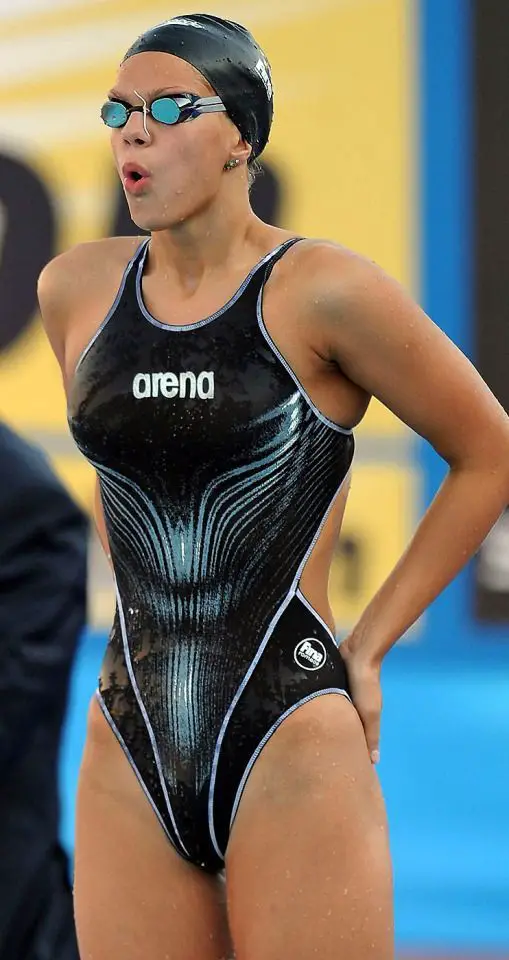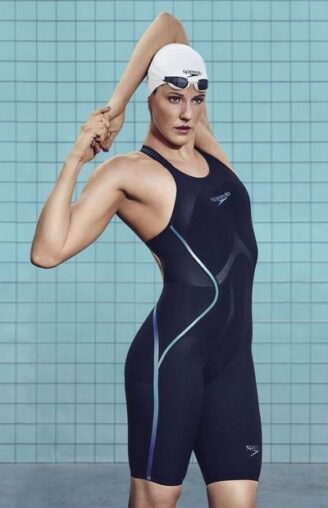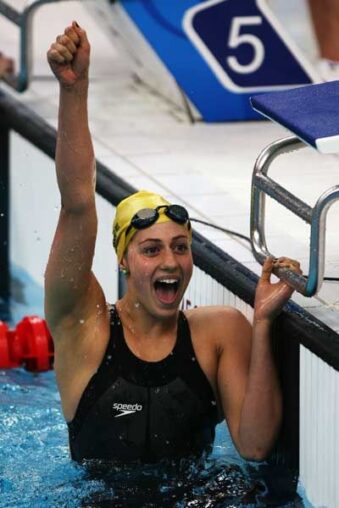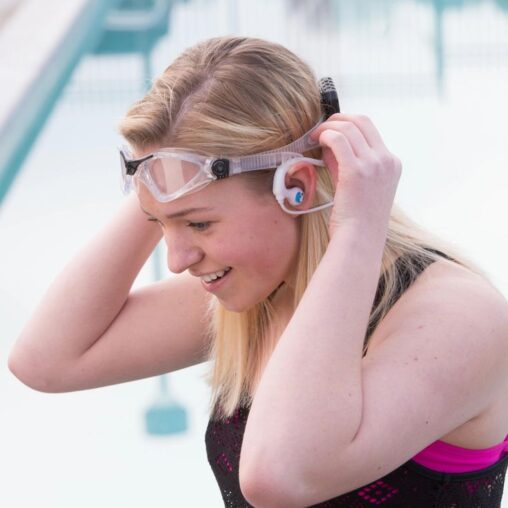
Swimming is a sport of incredible discipline, dedication, and physical rigor. As with any physically demanding pursuit, it can bring about changes in the athlete’s physique.
One such change that often catches the eye is the apparent reduction in breast size among female swimmers. It’s a phenomenon that has generated curiosity, with many wondering why this happens and how it affects the swimmers.
This comprehensive article delves into the science behind the connection between swimming and breast size, dispels common misconceptions, and highlights the advantages and challenges that this relationship brings to female swimmers.
Understanding the Swimmer’s Body

Swimmers’ Body Composition
A swimmer’s physique is a critical element of their success in the pool. In swimming, having a lean body with a low percentage of body fat provides a distinct competitive edge. The distribution of body fat varies among athletes, with swimmers typically having a lower percentage than athletes in sports like gymnastics or basketball.
One reason behind this variation is the necessity of swimmers to enhance their endurance and minimize water resistance. A streamlined physique with a balanced distribution of muscles and fat allows swimmers to move more efficiently through the water.
Swimming itself is a high-calorie-burning sport, so the decrease in body fat occurs as a natural consequence of intensive training and a well-structured diet that meets energy demands.
The Impact of Intense Training on Body Fat
Intensive training regimens and extensive hours spent in the pool significantly affect the breast size of female swimmers. Breasts are composed primarily of glandular and fatty tissue, with fat making up a significant part of this composition.
During rigorous, high-intensity endurance training, the body’s energy demands increase, leading to a higher fat expenditure. Combined with a thoughtfully balanced diet that provides energy while minimizing fat gain, this can result in decreased overall body fat levels, including in the breast area.
Perception vs. Reality
The observation that female swimmers often appear to have smaller breasts can be misleading. It is essential to recognize that the perception of breast size is influenced by factors such as the design of competitive swimsuits, which compress and flatten the breasts, creating a more streamlined appearance.
Furthermore, swimmers tend to develop strong shoulder muscles due to the sport’s intense upper body workouts. This can further emphasize the appearance of smaller breasts. However, the notion that all female swimmers have smaller breasts is not entirely accurate. In reality, swimmers, like athletes in any sport, exhibit a diverse range of body shapes and sizes.
Breast Size and Swimming Efficiency
The physical demands of swimming significantly contribute to variations in breast size among female athletes. Consistent training strengthens chest and arm muscles, leading to a natural reduction of breast tissue and fat. Swimmers, in general, possess leaner body compositions, which may result in smaller breasts when compared to the average sedentary woman.
However, breast size can affect swimming efficiency as well. Larger breasts might create additional water resistance and marginally decrease performance. For competitive swimmers, having smaller breasts could be advantageous, as it may enhance their speed and agility in the water.
It’s important to emphasize that breast size is just one factor among many that contribute to a swimmer’s success. Performance in swimming is determined by numerous aspects, including technique, endurance, mental fortitude, and training dedication.
Swimming and Breast Size

Does Swimming Reduce Breast Size?
Swimming, despite its muscle-toning benefits, does not directly reduce breast size. Breasts are primarily composed of glandular and fatty tissue. Engaging in regular swimming sessions helps tone chest muscles but does not lead to a direct reduction in breast size.
However, weight loss from consistent exercise could indirectly result in a decrease in breast size. The logic behind this is that breasts contain fatty tissue, and an overall reduction in body fat may cause a change in breast size.
The Interplay of Genetics and Exercise
While both genetics and exercise influence breast size, genetics likely have a more significant impact. Genetic predisposition plays a vital role in how an individual’s body stores fat, which is an inherent trait.
Each person’s body is inclined to store fat in specific areas, and breasts are one such area. When fat loss occurs, it isn’t selective; it’s a systemic process where the body sheds fat based on its natural inclinations.
Therefore, exercise alone cannot directly alter breast size. Rather, exercise strengthens chest muscles and ligaments, offering better support to the breasts and potentially making them appear firmer.
Endurance training, such as swimming, can reduce overall body fat. Still, the change in breast size due to swimming is generally an indirect consequence of changes in overall body fat distribution and genetic predisposition, which varies from person to person.
In essence, swimming, like other forms of exercise, can lead to shifts in breast size due to fat loss and distribution, but it’s primarily a result of your unique genetic makeup. It’s essential to embrace your body shape, focusing on the health benefits and enjoyment derived from swimming rather than trying to alter your breast size through exercise.
Conclusion
The relationship between female swimmers and breast size is multifaceted, influenced by a combination of factors, including body composition, genetics, and intensive training. Understanding these elements is crucial to appreciate the diverse range of body shapes and sizes in the world of competitive swimming.
Female swimmers’ performance is determined by their dedication, technical proficiency, and mental resilience, with breast size being just one aspect of their unique athletic journey.
Rather than focusing on changing their breast size, these athletes embrace their bodies, recognizing that their dedication and strength in the pool are what truly define them.









